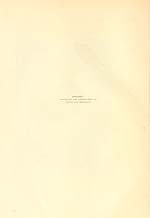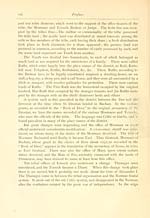New Spalding Club > Thanage of Fermartyn including the district commonly called Formartine
(13) [Page vii] - Preface
Download files
Complete book:
Individual page:
Thumbnail gallery: Grid view | List view
![(13) [Page vii] - Preface](https://deriv.nls.uk/dcn17/8221/82212648.17.jpg)
PREFACE.
According to Ptolemy, the Roman geographer, North Britain was occupied
by several tribes, which, in progress of time, came to be grouped into seven
confederacies, ruled over by seven chiefs, having under them seven inferior
chiefs, with a king over the whole confederacies. The country between the
Dee and the Spey formed one confederacy.
In a description of Scotland, written in the twelfth century, mentioned by
Dr. Stuart, this confederacy appears in two forms. In one case it is said,
'• Ouartum regnum fuit ex Dee usque ad flumen Spe majorem et meliorem
totius Scocie," and in the other case, it is spoken of as one of seven districts,
into which Scotland was divided, and as composed of Mar and Buchan.
The territory now known as Aberdeenshire and Banffshire was in old
t mes, according to Dr. Grub, the seat of the Taixali and other Celtic tribes,
And at the end of the sixth century formed part of the northern Picts. In the
" Book of Deer," at the time when St. Drostan landed in Buchan, and founded
St. Drostan's monastery, the country was divided among tribes, over which there
was probably an Ardrigh or under King, and the royal and tribal officials, a
Mormaer or great Steward acting for the King, and the Toisech ruling over a
tribe and under the Mormaer. The Mormaer represented the Crown in the
district over which he presided, accounted to the Ardrigh or King for his rents
and dues, and was over the whole tribes of the district, while the Toisech was
over a tribe, and was their captain to lead them to battle.
The best account of the tribal communities is to be found in Dr. Skene's
" Celtic Scotland," a learned and exhaustive work. According to Dr. Skene,
the land was first possessed by the tribe or community before it came into
possession of individuals. The word Tuath signified a family, and came to be
applied to the district occupied by the tribe, and in some records it is equiva-
lent to a barony. Tuath was the possession of the tribe, the technical name
of which, in the Brchon laws, was Fine. By the common law of the tribes,
the land which made up the Tuath consisted of fecht-fine or tribe land, and a
According to Ptolemy, the Roman geographer, North Britain was occupied
by several tribes, which, in progress of time, came to be grouped into seven
confederacies, ruled over by seven chiefs, having under them seven inferior
chiefs, with a king over the whole confederacies. The country between the
Dee and the Spey formed one confederacy.
In a description of Scotland, written in the twelfth century, mentioned by
Dr. Stuart, this confederacy appears in two forms. In one case it is said,
'• Ouartum regnum fuit ex Dee usque ad flumen Spe majorem et meliorem
totius Scocie," and in the other case, it is spoken of as one of seven districts,
into which Scotland was divided, and as composed of Mar and Buchan.
The territory now known as Aberdeenshire and Banffshire was in old
t mes, according to Dr. Grub, the seat of the Taixali and other Celtic tribes,
And at the end of the sixth century formed part of the northern Picts. In the
" Book of Deer," at the time when St. Drostan landed in Buchan, and founded
St. Drostan's monastery, the country was divided among tribes, over which there
was probably an Ardrigh or under King, and the royal and tribal officials, a
Mormaer or great Steward acting for the King, and the Toisech ruling over a
tribe and under the Mormaer. The Mormaer represented the Crown in the
district over which he presided, accounted to the Ardrigh or King for his rents
and dues, and was over the whole tribes of the district, while the Toisech was
over a tribe, and was their captain to lead them to battle.
The best account of the tribal communities is to be found in Dr. Skene's
" Celtic Scotland," a learned and exhaustive work. According to Dr. Skene,
the land was first possessed by the tribe or community before it came into
possession of individuals. The word Tuath signified a family, and came to be
applied to the district occupied by the tribe, and in some records it is equiva-
lent to a barony. Tuath was the possession of the tribe, the technical name
of which, in the Brchon laws, was Fine. By the common law of the tribes,
the land which made up the Tuath consisted of fecht-fine or tribe land, and a
Set display mode to: Large image | Transcription
Images and transcriptions on this page, including medium image downloads, may be used under the Creative Commons Attribution 4.0 International Licence unless otherwise stated. ![]()
| Publications by Scottish clubs > New Spalding Club > Thanage of Fermartyn including the district commonly called Formartine > (13) [Page vii] - Preface |
|---|
| Permanent URL | https://digital.nls.uk/82212646 |
|---|---|
| Description | Volumes 47-53 are uniform with but not part of the club's series. |
|---|---|

